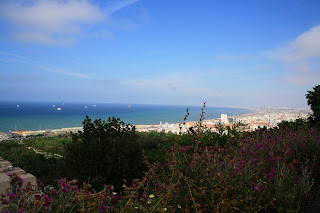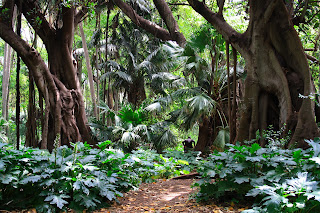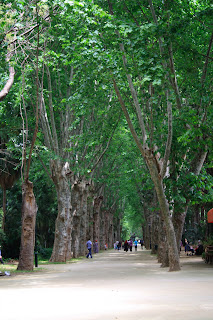Algiers is built on and around the hills that rise steeply from the Mediterranean; sea level to 1400 feet in short order.
One of the ladies from the embassy wanted to take a picture of the little girls, so then they had to reciprocate. Many, many groups of children were out today, in the park, on the cablecar, at the monument. Don't know what the occasion was, or even if there was an occasion.
The port and bay of Algiers. Looking nominally west, toward the Casbah, and up in the hills, El Biar.
Nominally east. I say nominally, because the Mediterranean shore in North Africa runs on an east-west, but of course a lot of times it may be northeast, or due north, etc.
A bumper thistle crop.
More thistles, looking west toward Algiers and the port.
Back to looking east. You can see the land off in the distance that forms the eastern edge of the bay.
There are three of these stylized Algerian fighter martyr statutes, one at each of the three legs of the monument.
The base of the monument. The soldiers won't allow people on the platform between the legs.
One of the ladies from the embassy wanted to take a picture of the little girls, so then they had to reciprocate. Many, many groups of children were out today, in the park, on the cablecar, at the monument. Don't know what the occasion was, or even if there was an occasion.
The port and bay of Algiers. Looking nominally west, toward the Casbah, and up in the hills, El Biar.
Nominally east. I say nominally, because the Mediterranean shore in North Africa runs on an east-west, but of course a lot of times it may be northeast, or due north, etc.
A bumper thistle crop.
More thistles, looking west toward Algiers and the port.
Back to looking east. You can see the land off in the distance that forms the eastern edge of the bay.
There are three of these stylized Algerian fighter martyr statutes, one at each of the three legs of the monument.
The base of the monument. The soldiers won't allow people on the platform between the legs.































